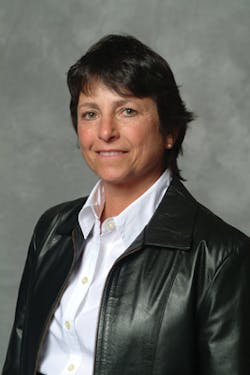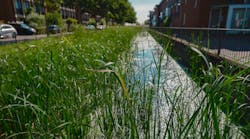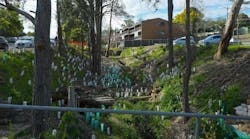Accomplishing Goals Is Better When Working Together
I am writing this message to address the topic of partnerships, including partnerships IECA currently has in place, as well as what we are working on for the future. I addressed this topic in my Director’s Message from September 2009, and it is interesting to analyze what has changed in the last few years.
Setting Goals
In a most important step, during the IECA Board of Directors meeting in June 2011, we agreed to form a task force to explore relationships with other organizations and to create a set of guidelines for developing relationships with these organizations. Past President Ron Faucher was selected to head this task force.
Over the years, IECA has developed working relationships with other organizations, and we have sent representatives to various conferences and have exchanged booths without a real rationale or overall goal directing the choices we made. As Ron recently shared with me, “Partnerships are like friendships-you don’t need a whole lot, but they must be solid. The rest of the relationships can be classified as acquaintances.” To be successful and long-lived, partnerships must be a symbiosis; they must be mutually beneficial to both parties.
So what are the criteria? Who do we choose? What do we gain, and what does the relationship look like? One of the most obvious benefits is increased membership. By letting folks in other organizations know who we are and what we do, in theory our membership will increase.
Another advantage is education. Few organizations can offer such outstanding and diverse programs as IECA or have these programs available in so many forms. Partnering organizations could have increased access or at least exposure to IECA’s Webinars, IECA Live, and, of course, our conferences. What other organizations offer training and education from which our members would benefit?
We need to consider business opportunities and increased networking and exposure, which are certainly tangible benefits. We need to demonstrate how sharing conferences and tradeshows could decrease our operating expenses and increase our profit.
Partners Around the Globe
Although informal, we continue to partner with Engineers Without Borders (EWB) through our charitable fund, the SOIL Fund. The relationship began in 2008 as a joint venture with Arizona State University (ASU) in Tsurakú, Ecuador. The collaboration continued there into 2009 with personal assistance from IECA members Tom Williams, Nancy Roth Williams, Jeff deGraffenried, and Meredith Jackson. This year, IECA volunteer Will Mahoney teamed with the EWB-Denver Chapter for another project in Ecuador in the state of Cotopaxi. Will accompanied a team of EWB volunteers working in the Andean community of Malingua Pamba, Ecuador, since 2006. The mission is to assist the local population with the development of safe drinking water and irrigation systems, goals similar to the previous projects. Will assisted with erosion control issues associated with these systems. He will be presenting his work at EC12 in Las Vegas, Nevada, this February.
In 2010, Past President Doug Wimble, with support from the SOIL Fund, attended the International Conference on Combating Land Degradation in Agricultural Areas and the First Annual Meeting of the World Association of Soil and Water Conservation (WASWAC, www.waswc.org) and LANDCON2010 in Xi’an, Shaanxi Province, China. I encourage IECA to invite a representative from their organization to our 2012 conference and support our participation in their next conference in Thailand in 2013.
Perhaps the most exciting program with very visible benefits is the development of the University Partners program, developed by Jimmy Eanes, IECA education director. The program creates an informal relationship between IECA and universities and colleges that offer courses in fields related to erosion control, soil science, hydrology, landscape architecture, geology, and professional engineering. The overall objective is to introduce young professionals to IECA and to provide a means for them to interact in an educational environment with industry professionals who make up IECA’s membership. Currently, IECA is affiliated with 11 universities and colleges. During EC11, students directly participated as session moderators, a role that they will continue to serve in at future conferences. For more information on this program, go to http://www.ieca.org/education/university.
Two other examples of partnerships are IECA’s continuing contact with the American Society of Agricultural and Biological Engineers (ASABE, www.asabe.org), an educational and scientific organization dedicated to the advancement of engineering applicable to agricultural, food, and biological systems; and the recent exploration of a collaboration with the Industrial Fabrics Association International (IFAI). Although no specific details have materializes so far, we are still pursuing mutually beneficial goals.
In August, I attended a Society for Ecological Restoration event-SER, www.ser.org-in Mérida, Mexico. I was impressed with the depth and the variety of the presentations as well as the Exhibit Hall, host hotels and associated facilities, and the wonderful city. This organization should be considered as a potential partner in some shape or form, once we have defined what we hope to achieve from our overall partnership program.
As the task force develops the criteria for the board to evaluate future partnerships, the board of directors will keep the membership informed.


